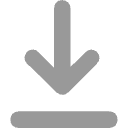| 0 | 116 | 1 |
 阅读 阅读 |
 下载 下载 |
 被引 被引 |
目的调查不同出海次数和晕船程度医务人员选择抗晕船方法的差异。方法自行设计调查表,对不同出海次数和晕船程度的221名医院船医务人员进行问卷调查。结果男性与女性医务人员在选择抗晕船方法上差异无统计学意义(P>0.05)。出海≤5次与>5次的医务人员在选择抗晕船方法上差异有统计学意义(P<0.01)。轻度、中度、重度晕船医务人员在选择抗晕船方法上差异有统计学意义(P<0.01)。结论出海次数多和晕船程度轻的医务人员倾向于选择海上适应训练,出海次数少和晕船程度重的医务人员更倾向于选择药物预防。
Abstract:Objective To survey the difference in the selection of anti-seasickness methods by medical workers aboard the hospital ship,based on the frequencies of deployment at sea and seriousness of seasickness. methods A questionnaire designed specifically for the survey was conducted among the 221 hospital ship medical workers with various frequencies of deployment at sea and seriousness of seasickness. results There was no significant difference in the selection of anti-seasickness methods between male and female medical workers(P>0.05).Significant difference could be seen in the selection of anti-seasickness methods,when a comparison was made between medical workers with deployment at sea for less than 5 times and those with deployment at sea for more than 5 times(P<0.01).And significant difference was shown in the selection of anti-seasickness methods among medical workers with mild,moderate and severe seasickness(P<0.01). conclusion Medical workers with more frequent deployment at sea and with mild seasickness tended to take sea-acclimatization,while those with less frequent deployment at sea and with severe seasickness tended to choose drug prevention.
[1]吴桂荣,曾伟杰,席玉胜.医院船医务人员晕船病发生状况的调查[J].中国健康教育,2005,21(3):221-223.
[2]吴桂荣,曾伟杰,洪加津,等.医院船医务人员晕船情况的调查[J].解放军预防医学杂志,2008,26(7):65-66.
[3]龚锦涵.航海医学[M].北京:人民军医出版社,1996:495-505.
[4]Holtmann S,Seifet J,Scherer H.Causes and treatment of seasick-ness[J].Laryngol Rhinolotol,1987,66(2):99-101.
[5]刘民航,郭俊生,蔡建明,等.某陆军部队海上抗晕船适应性锻炼研究[J].解放军预防医学杂志,2004,22(2):93-96.
[6]曾伟杰,吴桂荣,席玉胜,等.医院船医疗卫生人员抗晕船与心理状况干预的研究[J].神经疾病与精神卫生,2007,7(3):35-36.
[7]吴爱平,林衔亮,付桂强,等.抗眩晕预适应强化训练对预防晕船的作用[J].海军医学杂志,2007,28(1):12-13.
基本信息:
DOI:
中图分类号:R821.8
引用信息:
[1]吴桂荣,庄永敬,卢良声,等.医院船医务人员选择抗晕船方法的调查[J].海军医学杂志,2011,32(05):311-313.
基金信息:
全军医学科学技术研究“十一五”计划课题(06MA123)